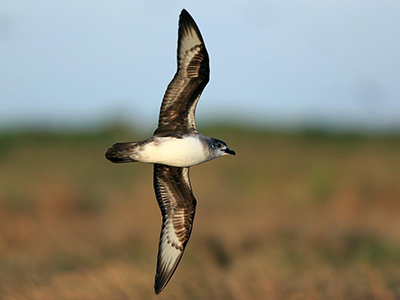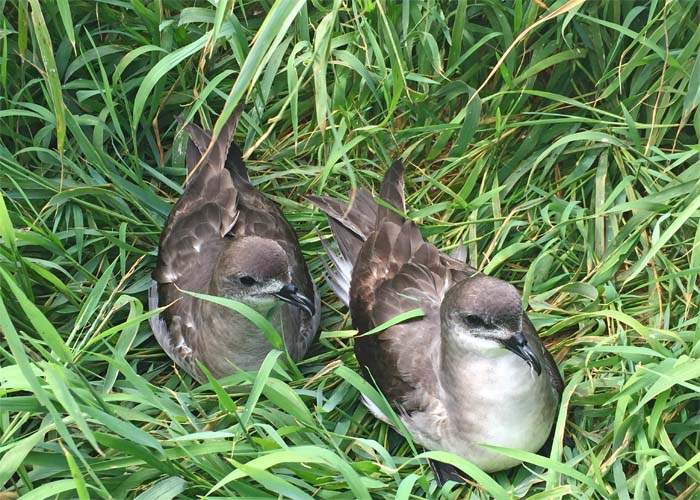Herald petrel

Common name: Herald petrel
Scientific name: Pterodroma heraldica
Family: Procellariidae (Petrels and Shearwaters)
Status: Critically endangered
Herald petrels are oceanic seabirds, not seen from the mainland. They are 34-39cm long with a wingspan of 80-100cm. Their plumage is highly variable, ranging from birds with a white body and dark head to wholly dark individuals. They have white flashes on the underside of their wingtips.
In Australia, Herald petrels breed only on Raine Island where about 50 mature individuals have been recorded. They breed in winter, forming a nest in the sand which is hidden by grasses and a dense mat of shrubs.
Raine Island, approximately 620km north-west of Cairns, is the most important seabird rookery in the Great Barrier Reef World Heritage Area.
Threats and recovery actions
Climate change is potentially a significant threat for Herald petrels, particularly sea level rise which can flood low-lying nests and increased sea surface temperatures which can impact food availability.
Herald petrels are also impacted by events such as storms and cyclones which can damage the vegetation and cause mortality to birds on Raine Island.
Most other threats are well managed. This includes preventing the introduction of feral predators, particularly black rats which could eliminate the Herald petrel breeding population. Raine Island has strict biosecurity quarantine requirements and is not accessible to the public.
All access to the breeding area is restricted during the breeding season from July to October to avoid eggs being trampled and disturbing incubating birds.
The Raine Island Recovery Project is a collaboration between the Queensland and Australian governments and the Traditional Owners - the Wuthathi People from Cape York and the Meriam Nation (Ugar, Mer, Erub) People from the eastern Torres Strait.
The project aims to protect and restore the island’s critical habitat to ensure the future of key marine species including green turtles and seabirds. Actions include monitoring species and undertaking research to increase the resilience of key species.
There is ongoing monitoring of the Herald petrels on the island. This includes the Queensland Government working with CSIRO and the University of Tasmania to profile the age structure of the birds and a collaboration with the Zoological Society of London to track where Herald petrels go when they leave Raine Island.

For more information about the Herald petrel, view the species profile.
Learn more about how you can help the Herald petrel and other Australian wildlife by supporting threatened species projects and caring for our native plants and animals.


